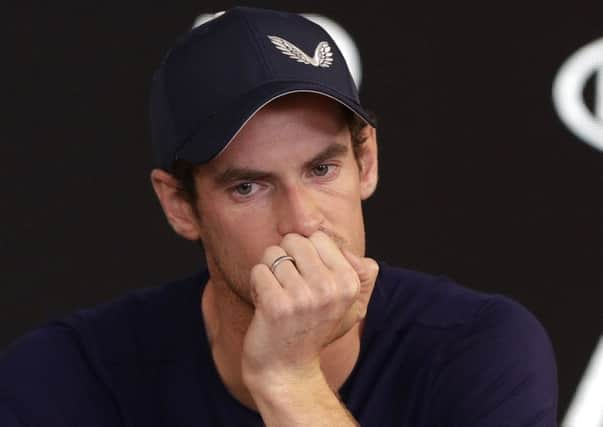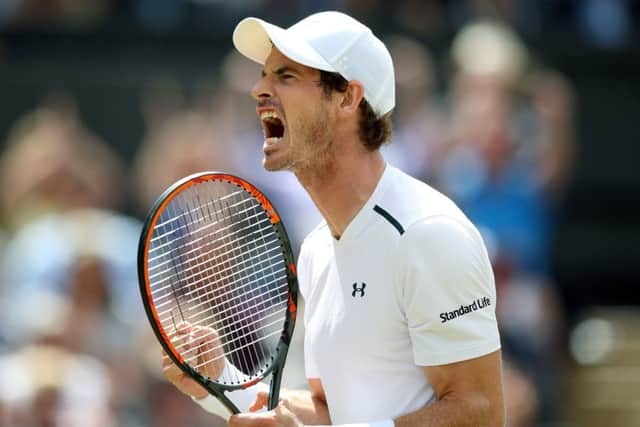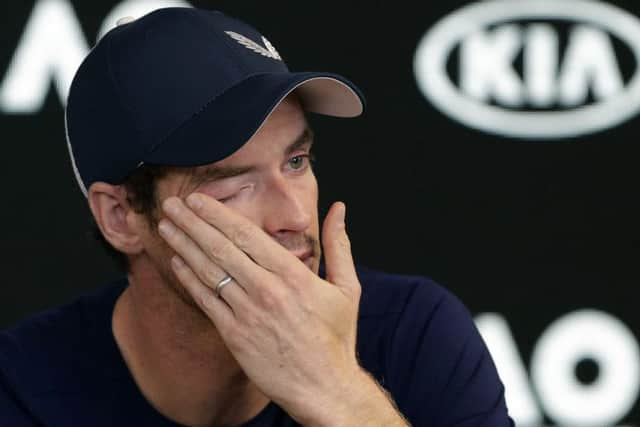Nick Westby: British sport has huge gap to fill as Andy Murray heads into sunset


Of the myriad compliments you can pay Andy Murray in the wake of the heartfelt announcement of his retirement plans yesterday, one is that the Scot made tennis a year-round interest.
We followed Murray to his many finals in Melbourne every January, to his gradual development on clay that culminated in a grand slam showdown at Roland Garros in the Spring, to two Olympic gold medals in London and Rio in the height of summer, to a breakthrough major title at Flushing Meadows in the early autumn and to a Davis Cup triumph in the winter.
Advertisement
Hide AdAdvertisement
Hide AdOf course there was also his annual journey at Wimbledon, progressing year on year through long hair, tantrums and tears of hurt to the ultimate achievement in 2013 when he banished once and for all the question that had haunted British sport for three-quarters of a century.
Andy Murray transformed his sport in Britain, and transcended it, through his achievements and his personality.
Coming across as surly when he first emerged on the scene after winning the junior US Open, Murray took time to win over the affections of the British public, chiefly because initially he had the attitude of not caring less what people thought of him.
But his vulnerabilities in those early grand slam defeats at Flushing Meadows, Melbourne and particularly SW19 when he lost to Roger Federer in 2012, eventually endeared him to the nation’s heart.
Advertisement
Hide AdAdvertisement
Hide AdThe joyous lap of honour that spontaneously overcame him when he gained revenge on Federer a few weeks later on the same hallowed grass in the Olympic final, was a watershed moment in his career.


His grand slam breakthrough came a month later in New York, summoning up the courage to overcome Novak Djokovic’s surge from two sets down in the fifth and deciding set.
Wimbledon 2013 was Murray’s finest hour, beating Djokovic again in three sets, the final game a rollercoaster in which he looked in control and then seemingly lost his nerve before finally overcoming the demons, provided a microcosm of the journey he and the public had been on over the past few years.
His second Wimbledon win three years later was less dramatic. Murray was favourite and he delivered, emphatically.
Advertisement
Hide AdAdvertisement
Hide AdA year earlier, he had single-handedly steered Great Britain to a Davis Cup title. He also reached world No 1 at the end of 2016, the one last frontier he had still to check off, his tireless approach to securing that status perhaps precipitating the hip injury that within six months would accelerate the end of his career.


On the court, Murray was admired for his athleticism, his shot-making, his tactics and above all else as he puts it, how he ‘emptied the bucket’ every time he played, all of which combined to ensure he was always the toughest of competitors.
Years from now, when Federer, Djokovic and Rafael Nadal have all followed Murray into retirement, one of those men will bow out as the greatest men’s player of all time. The other two will be second and third.
That is the era Murray competed in, making his three grand slam titles, two Olympic golds and rise to No 1 in the world all the more impressive.
Advertisement
Hide AdAdvertisement
Hide AdEven in losing eight grand slam finals, he faced one of those titans of tennis on each occasion.
Following those many desperate lows and emotional highs has been part of the Murray journey, part of the reason he became Britain’s favourite sporting superstar, being voted by the public as their Sports Personality of the Year in three out of four years.
A self-deprecating sense of humour, his prominence in the social media generation and his path from angry adolescent to maturing husband and father enhanced that image.
Murray was a role model to millions, a sportsman with his flaws but with a heart big enough to overcame anything.
British sport will be poorer now we can no longer follow his fortunes.